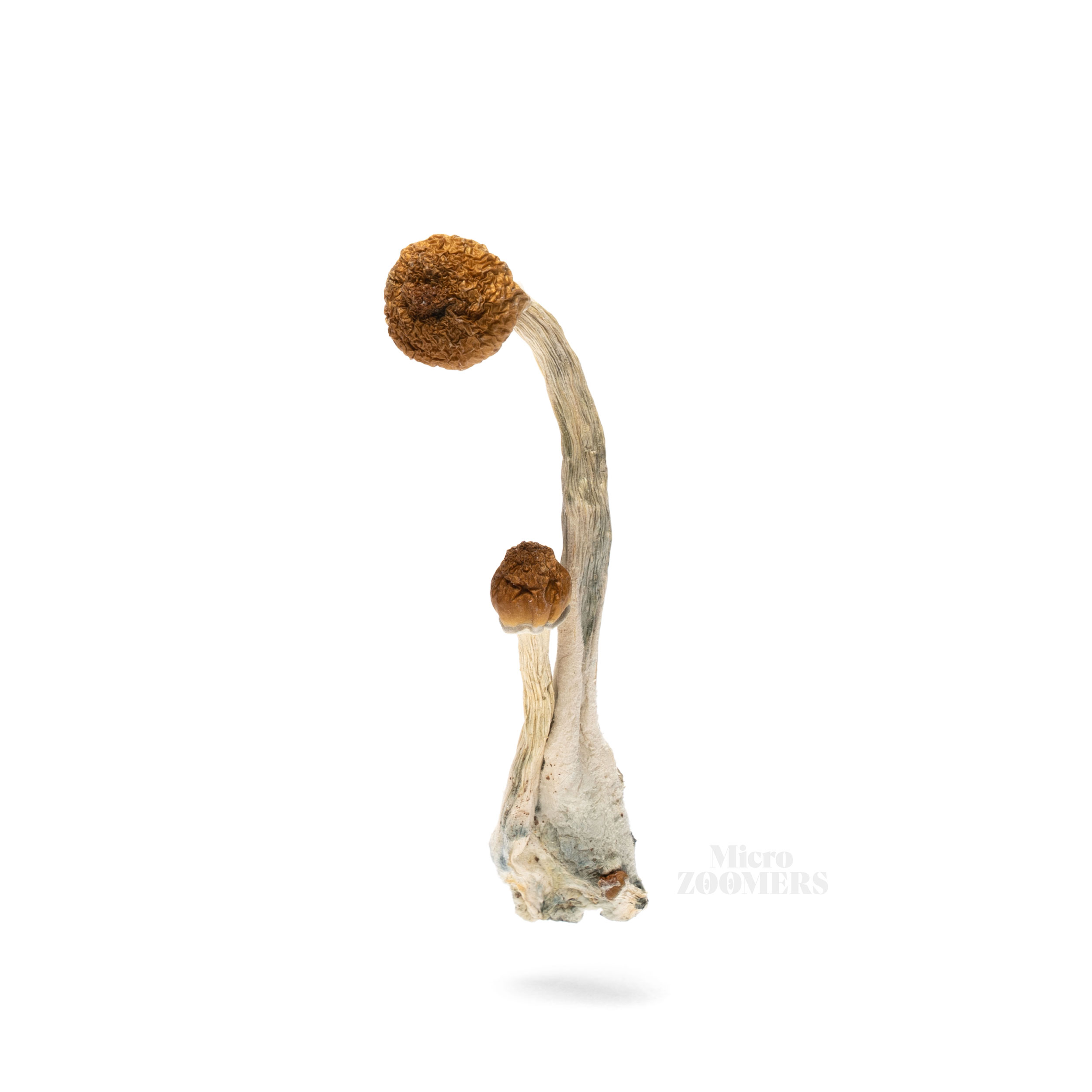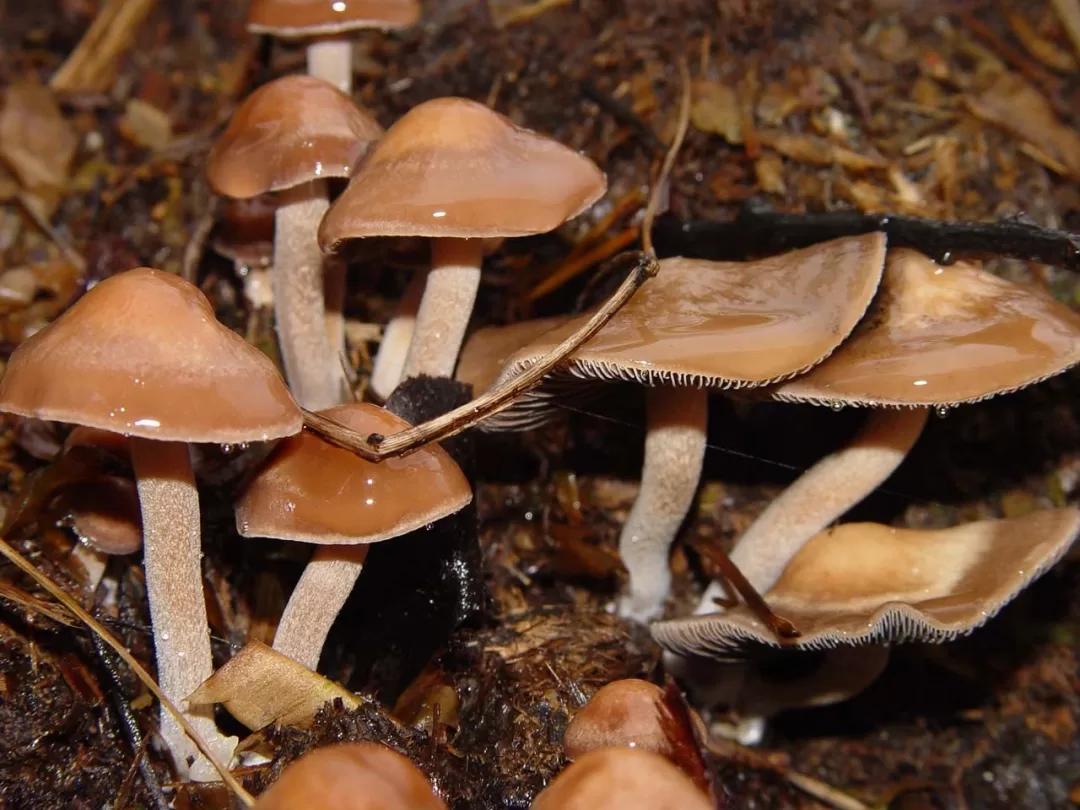
NEPALESE CHITWAN CUBENSIS
The Nepalese Chitwan cubensis is a moderately potent, sturdy looking, dung-loving magic mushroom found blooming in the tall grasses of the Chitwan District of Nepal. The word “Chitwan” stands for two Sanskrit words, “heart” and “jungle”. Chitwan is an area with a particularly rich fauna, flora and funga, and remains one of the rare undisturbed vestiges of the Terai regions.
It is around there, in the city of Sauraha, that the original specimen of Nepalese Chitwan cubensis is reported to have been found, growing in what was believed to be rhinoceros’ dung.
Situated in the southern part of Nepal, Sauraha is a laid-back city known as the gateway to the dense jungles Chitwan: a maze of lush vegetation filled with rare exotic animals and Safari Tours.
The city has a warm and temperate subtropical climate rhythmed by rainy summers and dryer winters; the type of weather a meaty Psilocybe cubensis species such as the Nepalese Chitwan cubensis loves to flourish in. Another optimal feature is the uniqueness of the Chitwan region soil: it is silt, a granular, sparkly material, between sand and clay, very rich in minerals such as quartz. It is the silt, deposited annually by floods along the Nile River, that created the rich fertile soil that sustained the Ancient Egyptian civilization. In other words, this impeccable strain is a “jungly heart” magic mushroom that grows in “quartzie” soil.
Like many of his tropical relatives such as the neighbouring Malabar Coast, Burmese cubensis, Vietnamese Psilocybe cubensis, Panaeolus Cambodginiensis, Panaeolus cyanescens or Panaeolus subbalteus, the Nepalese Chitwan cubensis is a dung-loving species yet, needs the minerals of the silt to flourish.
Since all is connected, the rich soil feeds the rich agricultural diversity that feeds the ruminants, which generate manure that feed mushrooms. What a fabulous cycle of life for some fabulous substrate.
Also, Psilocybe experts believe that the quality of the dung affects the potency of the mushroom, perhaps the Buddhist silt-soil lands of Nepal have a little special thing that unravels upon consumption; after all, many relate a moderate potency with very manageable effects. From meditative states to brain and spine-tingling sensations, to subtle visuals, consumers overall describe the Nepalese Chitwan cubensis magic mushroom to offer a balanced and memorable experience.
Perhaps this explains why this robust-looking Nepalese Chitwan cubensis is a very sought-after magic mushroom strain for both growers and cultivators. So many aspects of this strain charm: its “zen” and “heart-jungle” origins, its glutton-like meaty appearance, its Basilic-like onion/dome- shaped cap, its generous fruiting, its prolific sporulation, its constancy in flushes, and its fierce growing traits.
The overall smooth sensations of euphoria and soothing englobing spiritual feelings make many compare the trip of Nepalese Chitwan cubensis magic mushroom to the “wisdom-oriented” and beloved Golden Teacher. While others see a similarity to B+, Conocybe smithii, or Inocybe Aeruginascens because of their milder potency.
It is with no doubt, soothing strains like Nepalese Chitwan cubensis make great allies when it comes to discovering the merits of micro-dosing. Because it is a moderately potent strain, it can offer a safe journey into practice of sub-perceptual amounts of psilocybin, and really help improve mood, creativity, focus, or even menstrual cramps. If one gives the intention to it, the Nepalese Chitwan cubensis will wisely follow.
For a country famous because of its prolific cultivation of mustard, bee keeping, vegetables, cereal, grain, flowers and mushrooms, we can only hope one day will come where we don’t demonize the psilocybin mushroom, and perhaps the Nepali will be able to naturally grow the majestic Jungle-Heart Nepalese Chitwan cubensis on its one-of-a-kind Rhino-dung-and-quartz-silt-soil substrate, in-situ, for the world to experience!
Visual Description
NEPALESE CHITWAN CUBENSIS Potency
Habitat Origin






